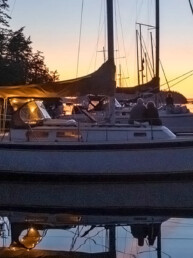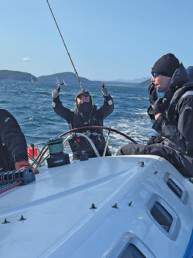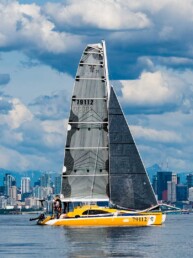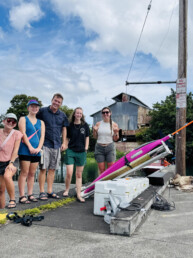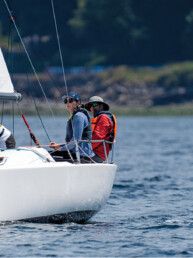In our latest Throwback Thursday, we honor legendary Pacific Northwest boat designer and builder, R.M. “Tolly” Tollefson; written by Deborah Bach for his 100th birthday.
He is one of the Northwest’s most enduring and prolific boat builders, whose cabin cruiser designs can often be seen traveling the waters of Puget Sound more than a half-century after they were first launched.
R.M. “Tolly” Tollefson, who turned 100 on January 24, 2011 and was celebrated at a party in Port Ludlow, is a legend among generations of boaters. The founder of Kelso, Washington-based Tollycraft Yachts, Tolly, as he’s known, was a carpenter turned boat builder. Although never trained as a naval architect, he created boats that inspire near-fanatical devotion and still please the eye even today.
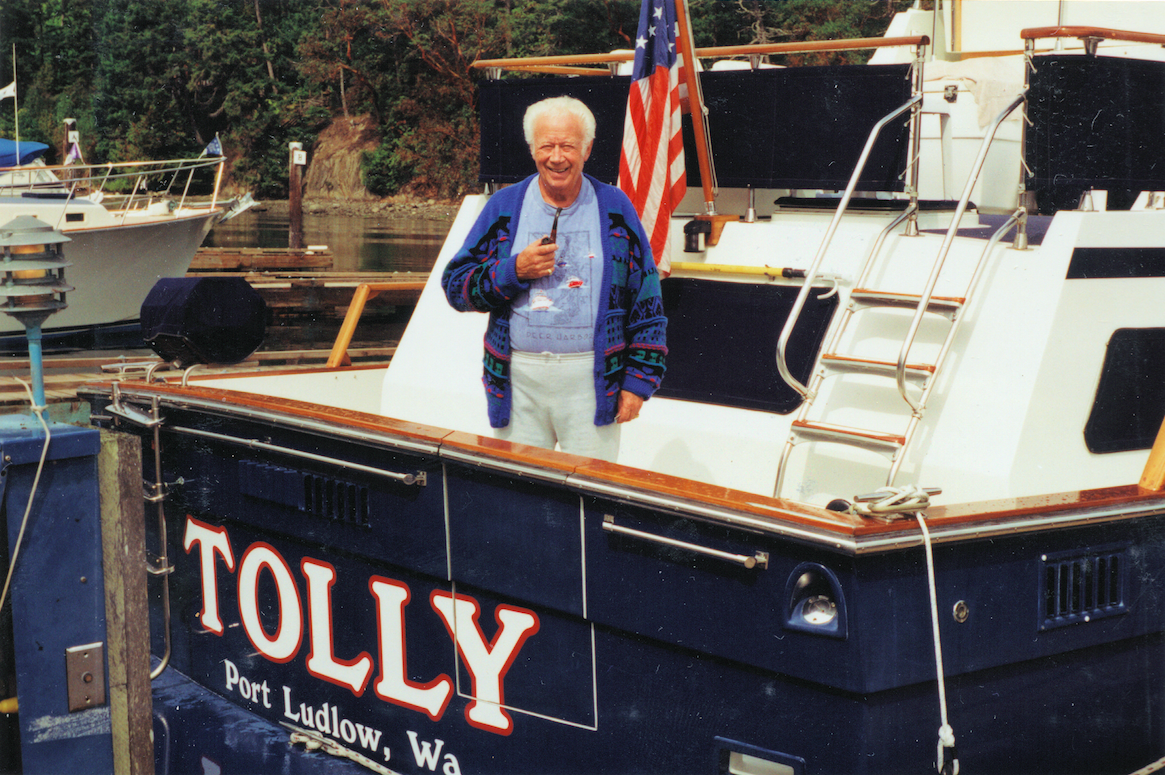
But the Northwest native’s legacy lies beyond a talent for iconic design. He was a marketing and sales pioneer, deftly tapping the zeitgeist of post-World War II America by turning out boats that perfectly fit an emerging new leisure class and building a successful business along the way. Yachting, once a pastime associated with the rich, was becoming a middle-class activity for families who suddenly had more time and money to spend on luxuries out of reach for their Depression-era parents. And Tolly was ready for them.
Realizing the growing role of women in boating, Tolly successfully created functional designs that appealed not just to men, but to their girlfriends and wives. He had a rare ability to translate the mood of the moment into something tangible, creating boats that fit the times and have stood the test of time.
Tolly was a visionary, said Brett Peck, commodore of the Tollycraft Boating Club.
“It’s hard to imagine someone who could build a company from zero today in the way that he did. Just the breadth of skills that he brought – the engineering, the ability to manage people, the ability to physically build things.
”I think about the people that I know today and those skills are packaged in many different people. Today you would have a manager and an engineer and a decorator. Tolly could do it all, and for that matter, sales. He went out and pounded the pavement himself. People like him just don’t come along but every great while.”
Yet for all the remarkable aspects of Tolly’s career, the most surprising of all may be the fact that he never set out to become a boat builder.
An Introduction to Boating
Born in Stites, Idaho on Jan. 24, 1911, Robert Merland “Tolly” Tollefson moved to Portland, Oregon with his family as a child. His first loves were music and art – he made watercolor paintings, sung in a college quartet and was a skilled woodworker who, as a teenager, made an intricately carved wooden chair for his mother that today sits in his home office.
Tolly’s first real introduction to boating was during a summer in high school, when he worked in a restaurant at Diamond Lake, Oregon, waiting tables and singing to diners to earn money for college. A guest with a powerboat hired Tolly to take his 9-year-old son out on the water.
“He couldn’t drive the boat, but we’d go around the lake and I’d get five dollars tip,” Tolly recalled during a recent interview at his Port Ludlow home.
Tolly studied architecture at the University of Oregon for two years before dropping out to help support his family, who were struggling through the Depression. He moved to Kelso, working in real estate and insurance before serving as a U.S. Coast Guard lieutenant during World War II, when he ran a 150-foot salvage tugboat during an 18-month tour of duty in the South Pacific.
After returning to Kelso, a 26-year-old Tolly built and sold his first boat, a 35-foot motorboat, at a mill owned by a friend. Several years later, in 1946, the mill came up for sale and Tolly bought it. The company specialized in doors, windows and cabinetry, but Tolly also started building boats, small plywood runabouts covered with fiberglass and equipped with outboard motors.
Tollycraft Yachts is Born
It was the early 1950s, and there were few boat manufacturers in the Northwest making anything but custom wooden boats. Before long, word got around about Tolly’s runabouts and people started asking for them. When the mill was destroyed by a fire in 1952, Tolly launched Tollycraft Yachts in Kelso with five employees. He opened a larger plant in 1959, building bigger, all-fiberglass boats and often introducing several new models each year.
The company built more than 6,000 boats over the next three decades, ranging from 28 to 65 feet. Tolly worked extensively with renowned naval architect Ed Monk and later his son, Ed Monk Jr., who would do the lofting and help refine the designs.
But as Ed Monk Jr. once told Sea magazine, “We were more like engineers. We seldom have to do much more than make minor changes to Tolly’s drawings. The inspiration and conception for each Tollycraft comes from Tolly himself.”
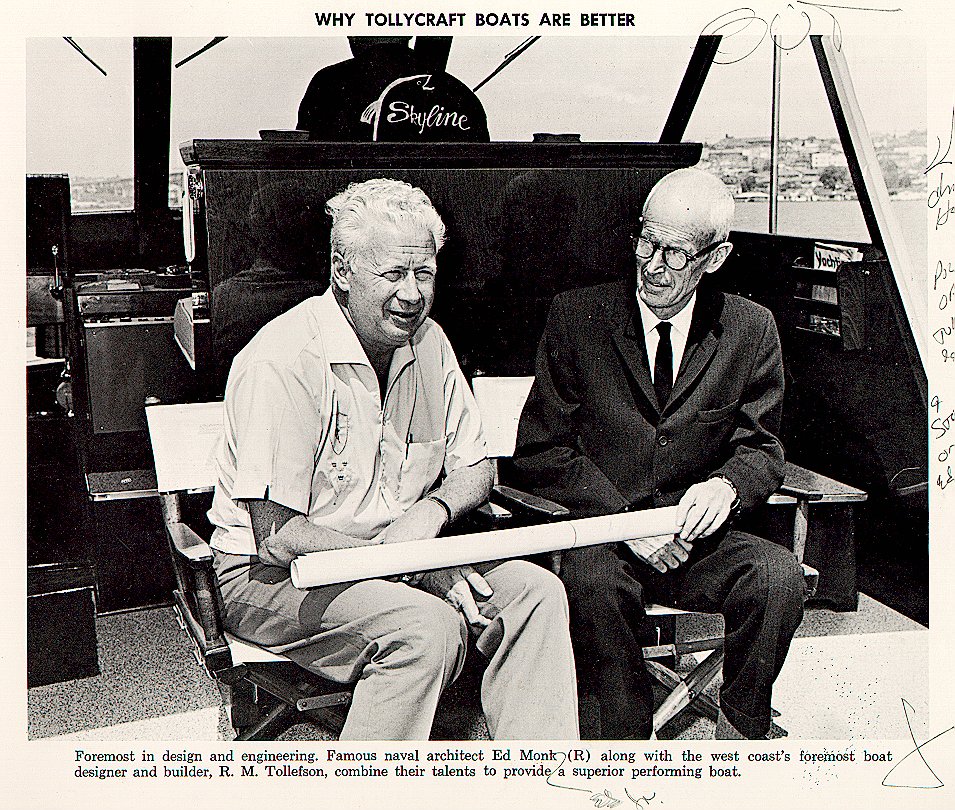
The most produced of Tolly’s designs was a 26-foot sedan with a high freeboard, walk-around decks and an eight-foot-long cockpit. Unusually beamy for its time at 10 feet, the sturdy, 9,000-pound Tollycraft 26 offered interior amenities including a full galley, a dinette that converts to a double berth and a sizable V-berth forward. The company built almost 900 of them until becoming a victim of its own success, seeing sales of the new 26-footers dropping as customers started snapping up the used ones.
In Tollycraft’s early days, few if any other Northwest boat manufacturers were working with fiberglass. And the fiberglass boats being made then were generic, recalled Scott Fultz, Tolly’s caretaker, who began working with him in 1962. Galleys were basic, heads were crude, water was pumped by hand and lighting was often an afterthought.
Though Tolly was known not to sacrifice function for form, he also realized that boating demographics had changed after the war. More women were going boating, and Tolly knew that if the women liked his boats, that would make it easier for their husbands to buy them. Tolly cruised extensively along the Pacific coast and would often stop and talk with other cruisers, particularly women, about what they wanted in a boat.
“A guy will take a boat no matter what,” Fultz said. “Tolly paid a lot of attention to what the women were saying. Who was he after? Not the guy. He was after the female, because she controls what the guy’s going to buy.”
Women told Tolly what they wanted – better galleys, wider and safer boats, big windows, cheerful interiors, hot water, heat – and he incorporated those features into his boats. “The industry just had not provided that,” Fultz said. “They were slow to change and he was fast to change, because he was amongst the people and he listened to them.”
Another Tolly trademark, stemming from his artistic sensibilities, was the use of color. While other manufacturers churned out boats with safely bland grey or white exteriors, Tolly boldly striped his boats with lines of teal – Tollycraft turquoise, later updated to a royal blue – and incorporated color into the interiors. It was a dramatic change for fiberglass boats, and some dealers initially needed convincing.
“Some dealers liked it, some of them didn’t. Our dealers used to tell me here in the Northwest that I was the best salesman they had,” Tolly said, laughing.
Tolly retired in 1987 and sold his company to an investor group from Seattle. The company filed for bankruptcy in 1993 and went out of business in 1997.
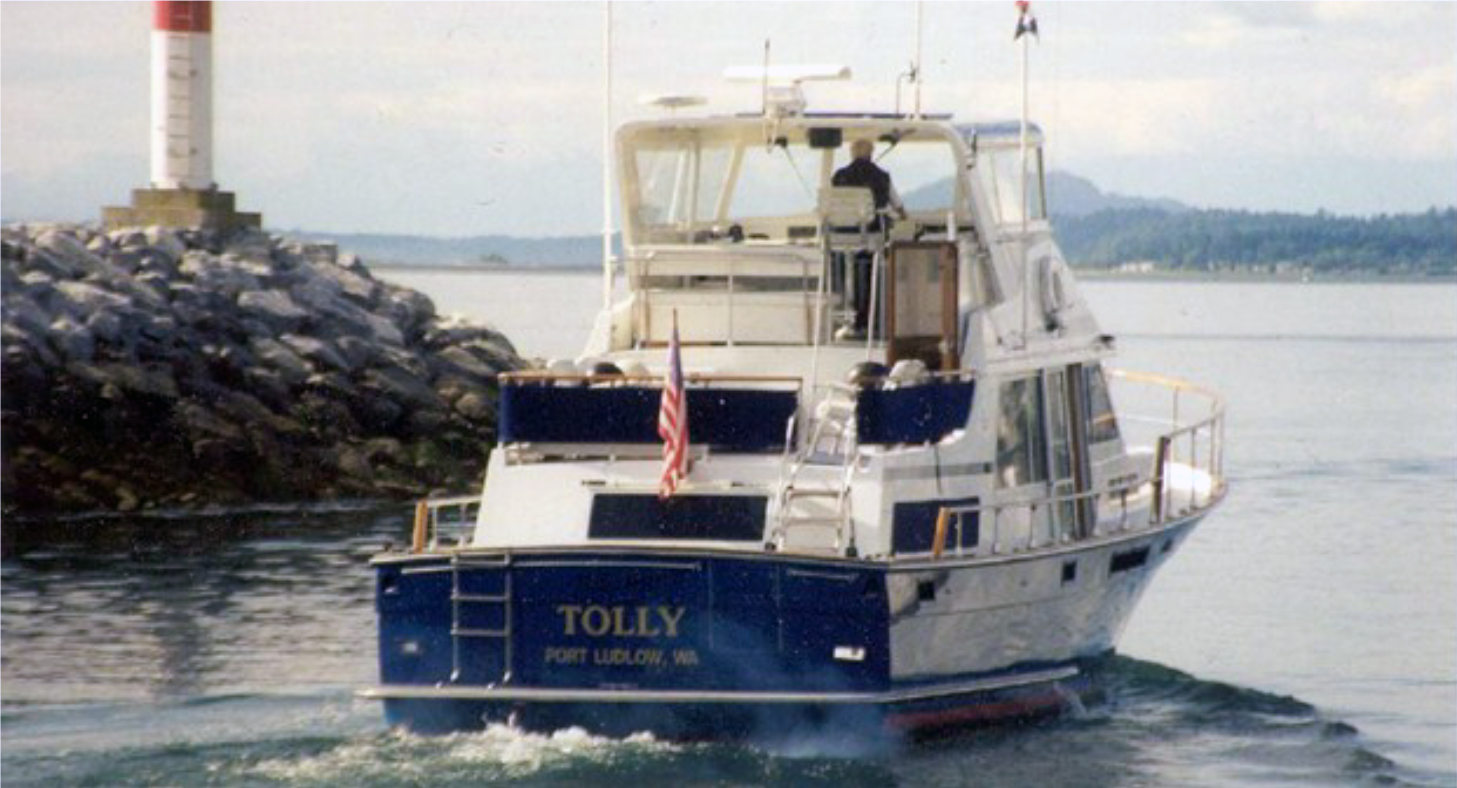
A Lasting Brand
More than a decade after Tollycraft Yachts closed, the designs of its founder attract what Peck describes as an almost cult-like zeal. Generations of families own Tollycraft boats. A steady stream of letters and cards arrives at Tolly’s house from enthusiastic owners. There are Tollycraft groups in Washington, British Columbia, Oregon and California, and more loosely affiliated associations have formed in Australia and Europe. Some owners spend hundreds of thousands of dollars – many times the boat’s original price – restoring their Tollycrafts. An owner in Australia even had the original hardware on his Tollycraft gold-plated.
Peck attributes the brand’s longevity in large part to the boats’ timeless designs and solid construction. “Tolly knew what he wanted his company to be about. He wasn’t interested in being the biggest boat out there,” said Peck, who owns a 1980 Tollycraft 48.
“He wanted a boat that people could afford – a good, stable, quality boat. The boats have always held their prices in the market, and many of them have solidly increased in value.”
Working with Monk, Tolly designed boats that still look contemporary decades later, Peck said.
“They came up with such a signature look. I can be four, five miles out from a boat (on the water) and I already know that it’s a Tollycraft. They just have that look. They’re elegant. They just have a basic beauty.”
Tolly was ahead of his time in other ways, Peck said, transitioning from wood to fiberglass long before other boat builders and using high-strength, low-weight polycore materials long before they became popular. Again, the idea came through talking with his customers.
“That came from our affiliation with boat owners and customers who were engineers at Boeing,” Fultz said. “As soon as (the technology) was developed for aircraft, within the same year we were using it.
“Tolly introduced that when you didn’t have the resource pressures like you do today,” Peck said. “He wasn’t try to save resin – he was building probably one of the most well-constructed boats you could build.”
Celebrating a Legend
Tolly’s airy home is on a hill with a bird’s eye view of Port Ludlow Marina. His first-floor office, painted blue, is decorated with his

framed watercolors, drawings, photos, awards and articles about him collected over his long career. In more spry days, Tolly would spot one of his boats coming into the harbor and head down to the marina to say hello. He kept his boat, a 48-footer named Tolly, at the marina until deteriorating health prompted him to sell it in 2000.
On Saturday, more than 150 Tollycraft owners and others are expected to gather at the Port Ludlow Bay Club for Tolly’s 100th birthday party. Tolly has met many of them before, at the Tollycraft rendezvous and gatherings he used to attend regularly. But this party will also include a few special guests: the original sales manager, president, controller, purchasing agent and production manager of Tollycraft Yachts, most of whom Tolly hasn’t seen in a decade.
“It’s very rewarding,” Tolly said of the many loyal Tollycraft owners. “It’s really the Tollycraft clubs that have kept the name and the boats alive. I don’t think there is any manufactured boat that has the following we have.”
Perhaps not, but it is well deserved. Happy 100th birthday, Tolly.


